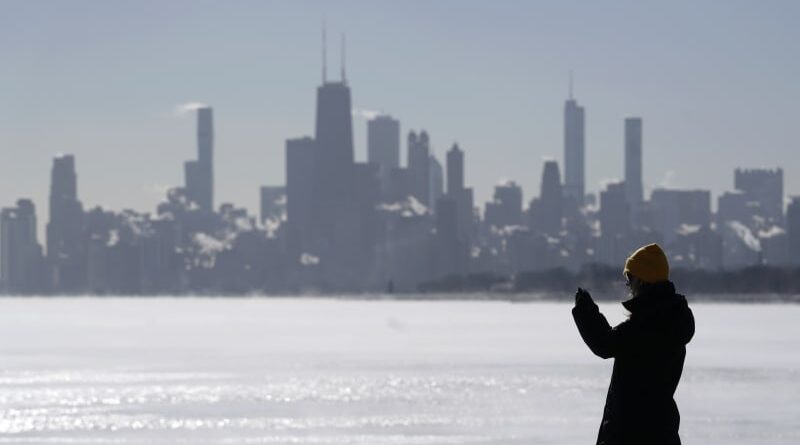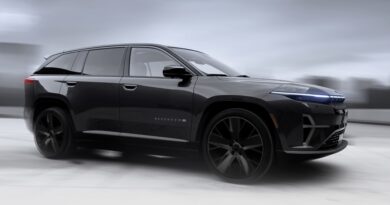Yes, EVs had trouble charging in Chicago cold. No, it wasn’t entirely their fault
There have been quite a few headlines in the past two days about Tesla owners in Chicago stuck at charging stations for hours waiting to charge their batteries or, worse, having to have their cars towed away when the batteries died or wouldn’t charge. There’s truth in the reports — batteries take longer to charge in single-digit temperatures, and owners have had cars towed. However, there seems to us to be a fair dose of sensationalism, and we have some questions about owner comments.
A shared aspect among the reports is calling out Tesla, which, based on our reading, has come about because a Supercharger station in Chicago full of Teslas provided the inciting spectacle. Even articles that didn’t name Tesla in the headline used the automaker as the face of cold-weather troubles, The New York Times captioning its lead photo of a Supercharger station in Colorado with, “A driver charging his car in Denver on Tuesday. Tesla drivers across the United States have struggled with severely cold weather this week.”
Newsweek, with the headline, “Tesla Disaster As Cars Won’t Charge in Freezing Cold,” included the line, “According to NPR, the issues are not specific to Tesla, but any electrical device that utilizes a lithium-ion battery; colder climes have been known to cause cell phone batteries to lose efficiency.” As if degraded battery performance in cold weather were esoteric and perhaps suspect knowledge that needed to be attributed to NPR because it was too risky for Newsweek to print without source attribution.
This is the part of the price Tesla pays for being an unusually notorious company that accounted for 55% of all EVs sold in the U.S. last year, and having the most numerous and most famous infrastructure. At least the NYT spoke to a non-Tesla driver, a Chevrolet Bolt owner who “said he set out on Sunday for a charging station with 30 miles left on his battery. Within minutes, the battery was dead. He had to have the car towed to the station.” Why there weren’t more stories from other charging stations or EV owners, we’re not sure.
Certain owner situations and comments also left us wondering. The NYT piece mentioned a Tesla owner who “found his Tesla [Model Y] frozen shut. He spent an hour in minus-5-degree temperatures struggling with the locks.” But Teslas have a function an owner can choose to leave on overnight that keeps equipment like the windshield wipers and locks from freezing. The car warns owners that using the feature draws from the battery; if an owner didn’t want that, there’s the precondition feature that will heat the car and defrost everything. As a commenter on the NYT piece wrote, “Use the app and Precondition: locks warm, windshield wipers operative, windshield defrosted. Excellent. Preconditioning, which even in the coldest mornings might just take 25 minutes or so, is the solution, and with the Tesla phone app you schedule the precondition ahead of time.”
A Tesla owner told NBC Chicago, “You have to come up here, wait two hours to get into the charger. They tell you it’s fast, but then it takes two hours to charge your car.” Another one complained to WGCU Chicago, “A charge that should take 45 minutes is taking two hours,” after which WGCU wrote, “Other drivers spoke about how the cold seemed to drain their batteries more quickly than normal.” Two paragraphs later, we get, “The challenges Tesla owners are facing aren’t specific to the carmaker. Lithium ion batteries, which are used in everything from smartphones to the Model S sedan, are notoriously susceptible to cold, particularly when temperatures are below freezing,” despite the headline for the piece being, “It’s so cold, Teslas are struggling to charge in Chicago.” Finally, Fox News got this from a Tesla owner, “‘Nothing. No juice. Still on zero percent,’ Tyler Beard, who had been trying to recharge his Tesla at an Oak Brook, Illinois, Tesla supercharging station since Sunday afternoon, told the news outlet. ‘And this is like three hours being out here after being out here three hours yesterday.'” We have more questions than answers about that one.
We’re not challenging that EV batteries suffer in cold weather. In fact, all vehicle batteries, even those in ICE-powered cars, suffer in cold weather — as can fluids like oil and diesel, hardware like door handles and locks, and electronic components, without taking the proper steps. Autoblog editor Jeremy Korzeniewski owns a 2023 Tesla Model 3. He said, “I can tell you I’m losing about a third of my Model 3’s expected range [of 268 miles] with the current single-digit temperatures here in Ohio,” and, “It took a full hour to charge from 7% to a little over 90% at a Supercharger station when it was in the single digits. That same charge at 40-something degrees, the last time I charged at that same station, took 20-ish minutes.”
The NYT did get into another aspect of this, the lack of infrastructure in the U.S. While Norway, where nearly 25% of cars on the road are electric, is the easy comparison, the NYT article explains, “The majority of people in Norway live in houses, not apartments, and nearly 90 percent of electric vehicle owners have their own charging stations at home” — a key point, that.
An automaker association representative in the UK told the outlet, “the problem was less about the capacity of electric vehicles to run well in cold weather, and more about the inability to provide necessary infrastructure, like charging stations.”
Salespeople at U.S. dealerships are often knocked for lacking knowledge of EVs. We don’t know what happened at the Chicago charging station, but based on the articles about it, a lack of infrastructure might have encountered a lack of thorough owner knowledge — to create a little perfect charging storm. In the words of an NYT commenter from Minnesota with four EVs in the immediate family, “EVs are not for everyone. The car’s range needs to be appropriate for your driving habits, you need to have reliable access to a charger, and you need to be aware of how variables like weather can affect your range.”




